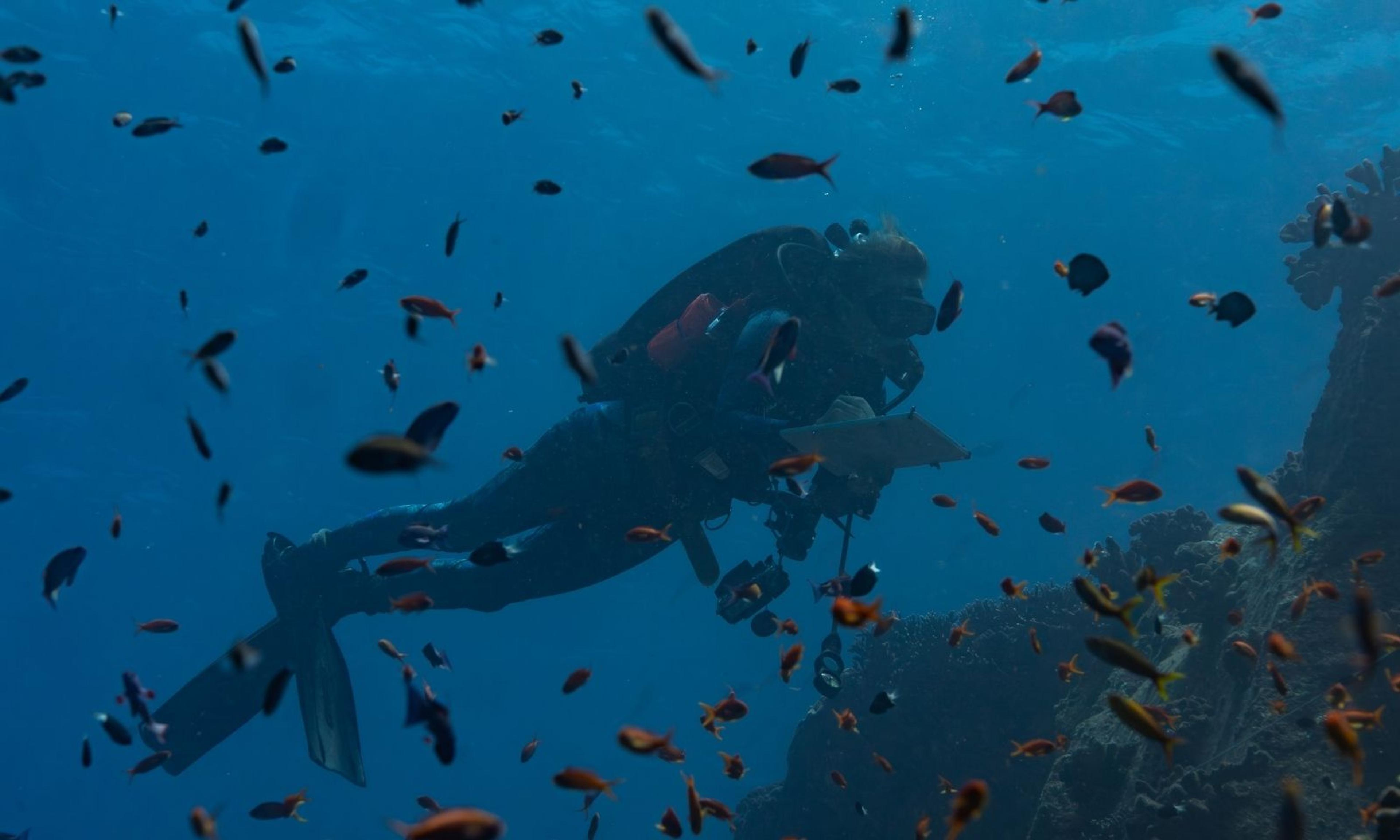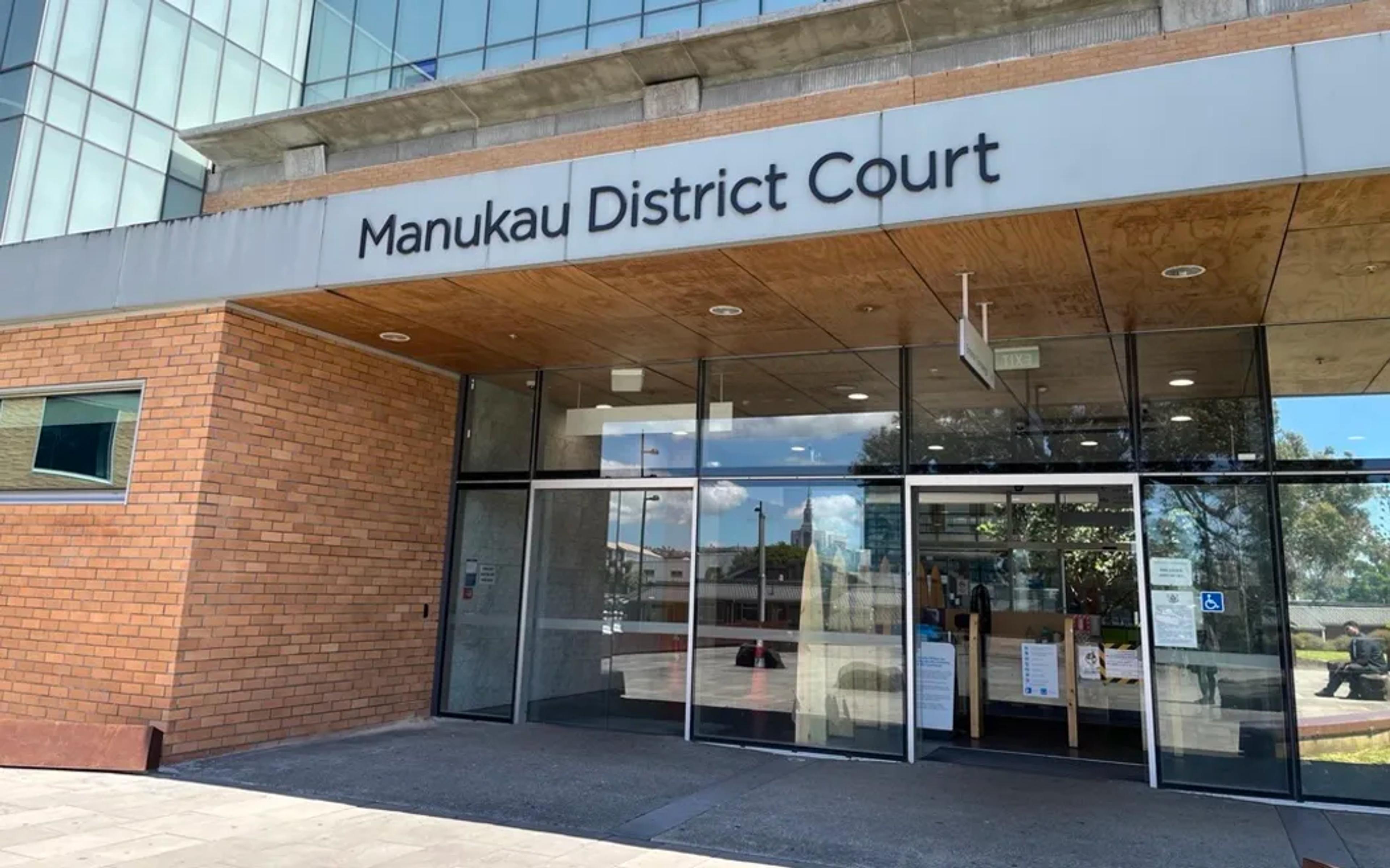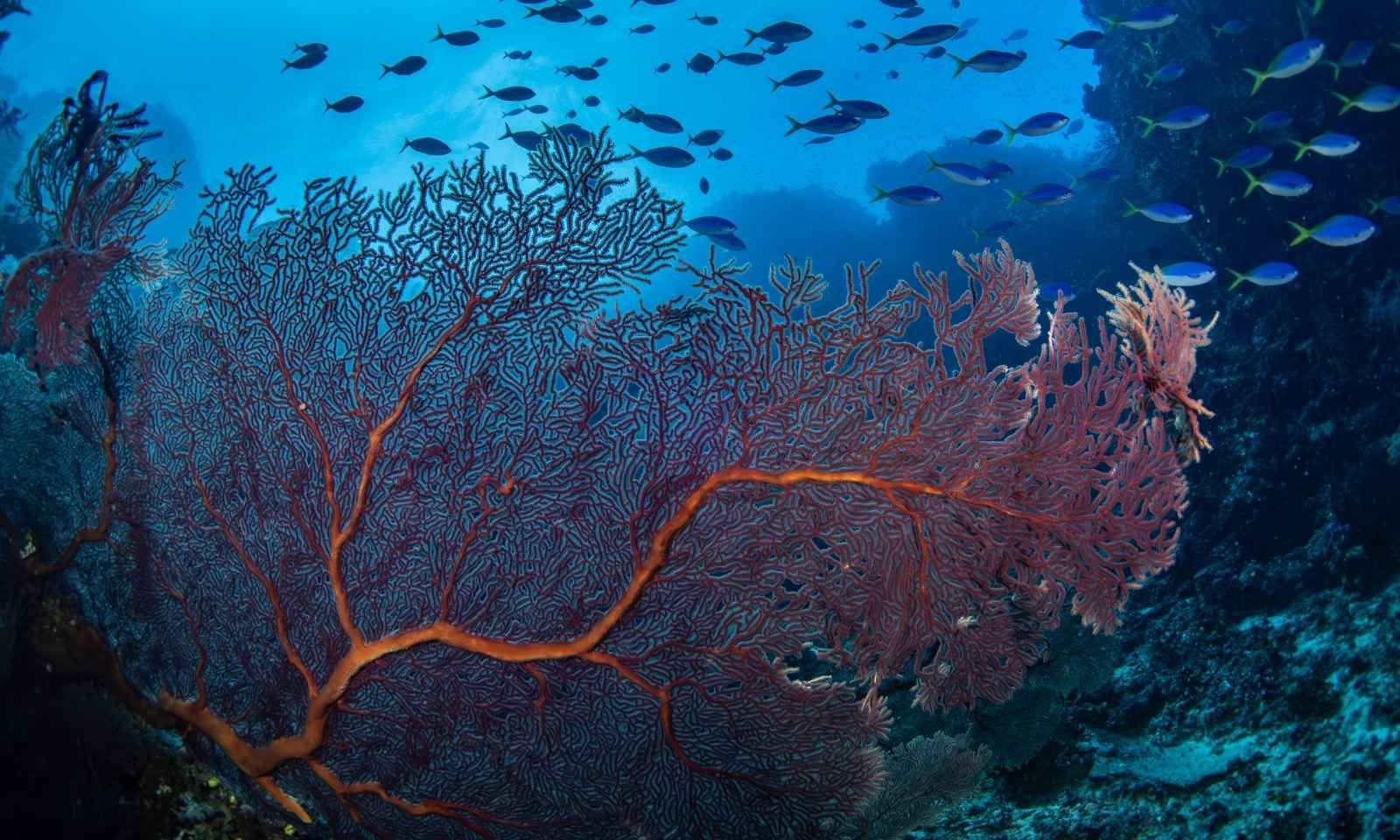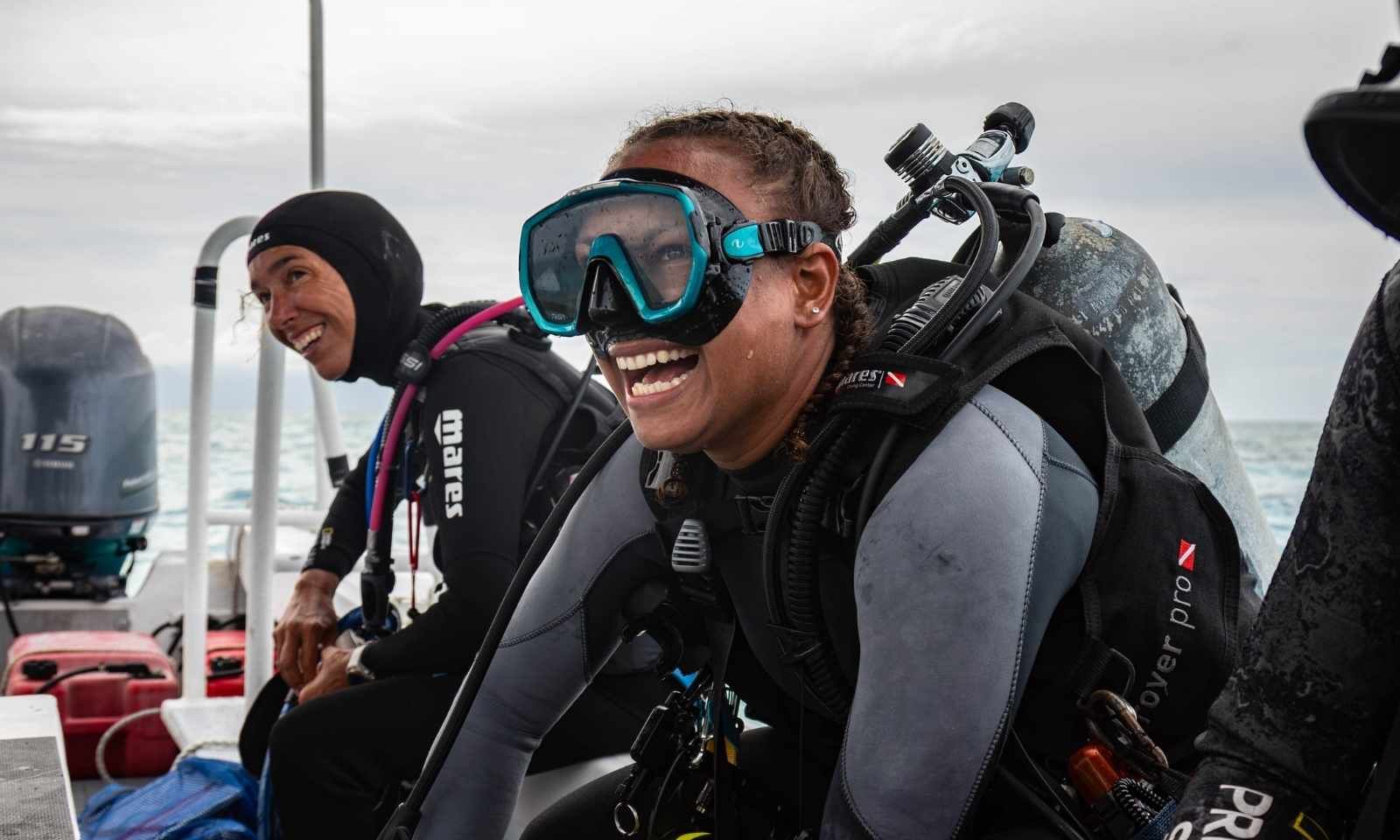

A National Geographic Pristine Seas scientist surveys a coral reef in Tongoa, Vanuatu.
Photo/National Geographic Pristine Seas/Iñigo San Félix
Pristine Seas' final Vanuatu expedition finds thriving reefs
Scientists say Vanuatu’s reefs are among the healthiest they’ve seen, as National Geographic Pristine Seas ends its final mission of the year.


‘A man so full of love’: Fepulea’i awarded comedy Topp Prize

Pacific health leaders warn cancer surge looms: ‘Early action cannot afford to wait’


US warns Fiji over human trafficking concerns linked to Grace Road Group

‘A man so full of love’: Fepulea’i awarded comedy Topp Prize

Pacific health leaders warn cancer surge looms: ‘Early action cannot afford to wait’

The National Geographic Pristine Seas (NGPS) team has wrapped up a month-long marine expedition across Vanuatu, marking the final field mission of the year.
The Vanuatu mission, led by Paul Rose, aims to support the Vanuatu government’s National Ocean Policy by documenting the country’s marine biodiversity and working with local communities to strengthen marine protection.
The expedition took place in several locations, including Tongoa, Pentecost, and the Kuwae crater, and followed earlier research conducted in the Torba province throughout October. The mission gathered extensive data through 31 hours of submarine dives, 285 scuba dives, and more than 200 camera deployments.
Rose says these dives reveal healthy coral systems and thriving fish stocks, particularly at Tongoa’s volcanic reefs. “The coral colours within that dark volcanic rock were just outstanding,” he says
“The same story we had up at West Gaua and Ureparapara, the scientists are saying ‘we've never seen anything like it’. That's a big statement from our scientists who work around the world for a lifetime,” Rose says.
“Once again, [Dr Eric Brown, a leading coral scientist], the man who discovered the world's largest coral, says ‘this is just blowing me away’. Absolutely beautiful, the sense of brightness of life, whopping great tuna swimming past. We met the fishermen and their magic management is the sort of thing that we need to celebrate and roll out globally.”

A sea fan coral surrounded by reef fish in Tongoa, Vanuatu. Photo/National Geographic Pristine Seas/Iñigo San Félix
Pentecost was a standout location during the journey, where the team met with community members and young people involved in National Geographic’s Photo Camp. The initiative is a global storytelling programme that introduces youth to photography.
It provides immersive, hands-on training led by world-class National Geographic Explorers and photographers. The training helps students build creative skills, confidence, and strong community connections.
In Laone Village, 12 students from Lini Memorial College participated in a five-day photography and writing programme in collaboration with NGPS, wrapping up with a community showcase at the Main Village Nakamal on Saturday.
Listen to Paul Rose’s full interview below.
“It really does great work with storytelling and opening the doors to people by photography. Not just young ones looking to be good field observers,” Rose says.
“But using their interest in photography and developing skills to do other things. So it was great to finally meet them. I've been a fan of that project for many years and finally met them at Laone village.”
Ada Sokach, a local fisheries scientist and partner of NGPS, provided an update on the Laone-Lamalana Traditional Marine Protected Area, which is recognised globally as an example of rapid reef recovery.

(Left to right) National Geographic Pristine Seas scientist Emma Cerbain and scientist from Vanuatu and local partner for National Geographic Pristine Seas expedition Ada Sokach in Vanuatu prepare for a dive. Photo/National Geographic Pristine Seas/Caitlin Bailey
“They noticed that the fish stocks were declining and the coral was not in good health, so they protected it. It's not that huge on a global scale, but it's pretty big for a community,” Rose says.
“Within just five years, it's recovered so well And that is held up many times as a good example around the world of how a community led protected area can really work.”
The expedition welcomed over 300 community visitors aboard the research vessel, highlighting the collaboration between scientists and ni-Vanuatu communities.
The next steps for the expedition will involve analysing the collected data, writing reports, and producing a documentary film, which will be presented to Vanuatu’s government and communities next year.
“A big thank you to ni-Vanuatu. It's been very special to come here and experience your waters and your people. It's been a total delight to see how all of these communities manage the resources of the ocean. It’s practical. It’s done with love, and it's a huge amount of success.
“It's a global model and it's something that's already been spoken about. It's great for us to witness. I'm looking forward to seeing how that expands after our report and our film. It's a real delight. So thank you to ni-Vanuatu.”